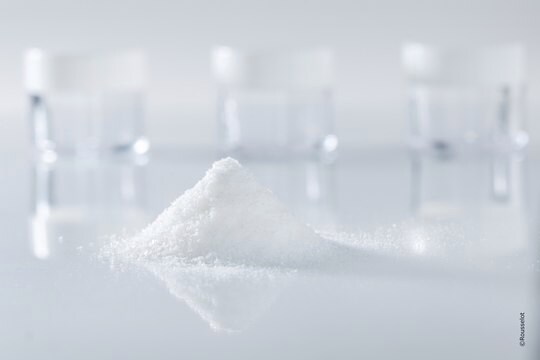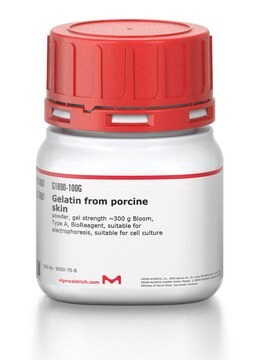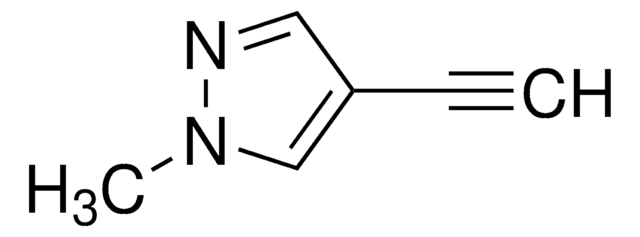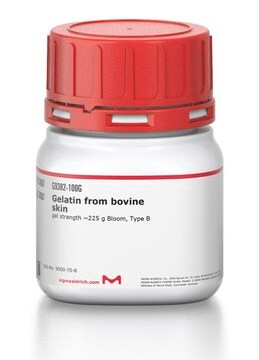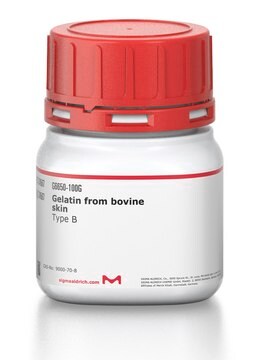901756
Low endotoxin gelatin from porcine skin
gel strength 240-360 (Bloom), <10 EU/g Endotoxin
Sinonimo/i:
beMatrix™ gelatin LS-H
About This Item
Prodotti consigliati
Forma fisica
powder
Impurezze
<10 EU/g Endotoxin
<300 g Total viable aerobic count
Perdita
<15% loss on drying
Colore
white to pale yellow
pH
5.0-6.5
Viscosità
4.0-6.5 mPa.s
Anioni in tracce
sulfite (SO32-): <1.5 mg/20g
Cationi in tracce
As: <1 ppm
Hg: <0.1 ppm
heavy metals: <20 ppm
Cerchi prodotti simili? Visita Guida al confronto tra prodotti
Categorie correlate
Applicazioni
Note legali
Codice della classe di stoccaggio
11 - Combustible Solids
Classe di pericolosità dell'acqua (WGK)
nwg
Punto d’infiammabilità (°F)
Not applicable
Punto d’infiammabilità (°C)
Not applicable
Scegli una delle versioni più recenti:
Certificati d'analisi (COA)
Non trovi la versione di tuo interesse?
Se hai bisogno di una versione specifica, puoi cercare il certificato tramite il numero di lotto.
Possiedi già questo prodotto?
I documenti relativi ai prodotti acquistati recentemente sono disponibili nell’Archivio dei documenti.
I clienti hanno visto anche
Articoli
Professor Shrike Zhang (Harvard Medical School, USA) discusses advances in 3D-bioprinted tissue models for in vitro drug testing, reviews bioink selections, and provides application examples of 3D bioprinting in tissue model biofabrication.
Il team dei nostri ricercatori vanta grande esperienza in tutte le aree della ricerca quali Life Science, scienza dei materiali, sintesi chimica, cromatografia, discipline analitiche, ecc..
Contatta l'Assistenza Tecnica.